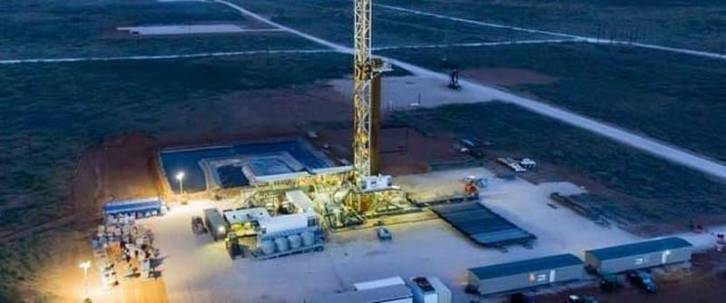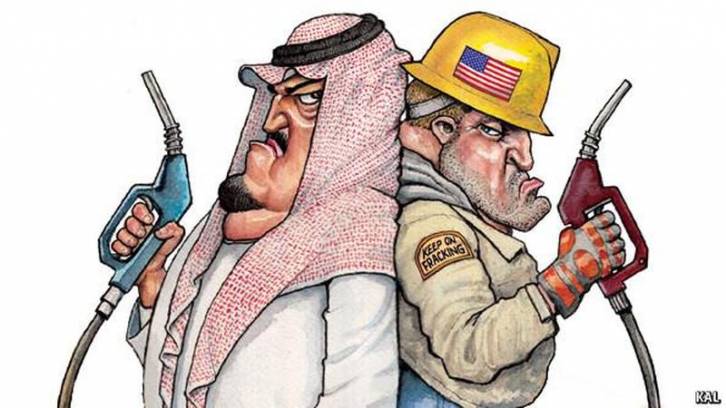
It may well be the case that the U.S. shale sector has cut over US$50 billion from its planned spending this year, the number of operating rigs has fallen by 40 per cent in the past four weeks, and output has fallen by nearly one million barrels per day (bpd) over the same period.
It is equally true, though, that what all these reports overlook is that the shale oil (and gas) sector is too important from a geopolitical and economic perspective to the world standing of the U.S. for it to be allowed to fail, and all other considerations are secondary.
In reality, the U.S. shale sector is set to emerge stronger, and earlier, than the vast majority of people think.
Ever since the 1973 Oil Crisis – when Saudi Arabia pressured OPEC members plus Egypt, Syria, and Tunisia to embargo oil exports to the U.S. (and the U.K., Japan, Canada, and the Netherlands) in response to the U.S.’s supplying of arms to Israel in the Yom Kippur War – the U.S. had been itching for a way to end its energy dependence on other countries.
Up to that point in October 1973, the U.S. had largely believed that the Saudis could be trusted to adhere to the multi-generational deal that U.S. President Franklin D. Roosevelt and the Saudi King at the time, Abdulaziz, had struck in 1945, as analysed in depth in my new book on the global oil market.
Specifically, this deal made in the Great Bitter Lake segment of the Suez Canal was that the U.S. would receive all of the oil supplies it needed for as long as Saudi Arabia had oil in place, in return for which the U.S. would guarantee the security of the ruling House of Saud.
By the end of the Saudi-supported embargo in March 1974, the price of oil had risen from US$3 per barrel to nearly US$12 per barrel and, as the Saudi Minister of Oil and Mineral Reserves at the time, Sheikh Ahmed Zaki Yamani (widely credited with formulating the embargo strategy) unequivocally highlighted at that point: the extremely negative effects on the global economy marked a fundamental shift in the world balance of power between the emerging nations that produced oil and the developed nations that consumed it.
When the U.S. shale industry began in earnest in 2006 with natural gas, and in 2010 with crude oil, it offered the U.S. the long-awaited opportunity to finally shrug off any shackles to Saudi that remained by dint of the Kingdom’s petro-power.
Within a relatively short time, the U.S. had become the number one oil producer in the world, pushing Saudi frequently into third place behind Russia, and producing an average of around 13 million bpd, with around 60-70 per cent of that coming from the shale sector.
In short, it meant that the U.S. did not have to put up with any nonsense from the Saudis anymore, or from anyone else for that matter, with a new-found ability to sanction major oil producing nations that fell foul of it for one reason or another – most notably including Iran, Venezuela, and Russia – without fear of the repercussions for its own energy security.

Given this massive geopolitical reason alone, it should be blatantly obvious to anyone that the U.S. will never capitulate on its shale-centric power, or even allow it to be materially damaged.
Even more immediate domestic political reasons militate into shale continuing to function as it was before Crown Prince Mohammed bin Salman (MbS) ignored recent historical precedent and launched the second oil price war against the U.S. shale sector in less than a decade, with the disastrous fallout for it that has resulted.
Senior U.S. politicians believe that if the Saudis are ever able to meaningfully reduce the U.S.’s oil output (which has effectively made it the new global ‘swing’ producer, instead of Saudi Arabia), then longer-term not only would the U.S. have to toe the Saudi line on whatever hare-brained schemes MbS might dream up but also it would allow Saudi Arabia over time to manipulate prices back up to levels that would allow it to avoid the imminent bankruptcy that it faces.
At the moment, Saudi’s official budget breakeven price per barrel of Brent is US$84 (although after the latest oil price war it is in reality nearer US$100).
The threat of this power, and the resultant oil price levels, is intolerable to U.S. politicians, and particularly those right now whose power is up for grabs in an election year.
In this context, any sustained Brent price above US$70 per barrel is regarded by the current Presidential Administration as being in a pricing area where the benefits to U.S. shale producers of higher prices are outweighed by the relative damage done to the U.S. economy.
More specifically, it is estimated that every US$10 per barrel change in the price of crude oil results in a 25-30 cent change in the price of a gallon of gasoline, and for every 1 cent that the average price per gallon of gasoline rises, more than US$1 billion per year in consumer spending is lost.
As Bob McNally, the former energy adviser to the former President George W. Bush put it: “Few things terrify an American president more than a spike in fuel [gasoline] prices.”
At least as bad for a sitting president is the effect of rising gasoline prices on an already ailing U.S. economy due to the COVID-19 pandemic.
According to U.S. NBER statistics, since World War I, the sitting U.S. president has won re-election 11 times out of 11 if the U.S. economy was not in recession within 24 months ahead of an election but presidents who went into a re-election campaign with the economy in recession won only once out of seven times (Calvin Coolidge in 1924).
As it stands, according to the American Petroleum Institute, the oil sector also accounts for 10 per cent of U.S. gross domestic product, although this has to be put in context of it being a lobby group for oil companies.
As it stands, the U.S. shale sector benefits in its trajectory of recovery from the after-effects of the previous (2014-2016) oil price war launched against it by the Saudis.
“Prior to that, it was the consensus that the breakeven price for U.S. shale producers was around US$70 per barrel but this was reduced by around half or even more in some cases,” Andrew Dittmar, a Houston-based senior M&A analyst for Enverus exclusively told OilPrice.com last week.
“They did so mainly through the advancement of technology that enabled them to drill longer laterals, manage the fracking stages closer and maintain the fracks with higher, finer, sand to allow for increased recovery for the wells drilled, in conjunction with faster drill times, and these improvements remain in place,” he said.
“They gained further cost benefits from multi-pad drilling and well spacing theory and practice, and for some time the only factor holding back further improvements in output and pricing were infrastructure constrains but even these have now improved, so they are in a much better position to bounce back now than they were after the 2014-2016 war,” he added.
So quickly, in fact, that from a standing start right now some of the best operations can be back online in as little as a week, although the refinery-related lead time is slightly longer.
“Typically, you buy the majority of your crude supplies 30-45 days out so what will happen is refineries will start to increase their run rates and will start buying, then buyers show up to start buying the crude from the producers and then the producers turn it back on – so there will be some advanced warning but it will be very dependent on refinery runs,” Bernadette Johnson, Enverus’ Denver-based vice president of strategic analytics exclusively told OilPrice.com last week.
“There are some risks associated with a shut-in, of course – such as water encroachment in the reservoir, and well bore or surface facility damage, everything we leave in the well will be subject to rusting, corrosion, and deterioration – and these will all have to be tested for, but within those parameters for the vast majority of the wells one week is absolutely sufficient to bring them back to full production capacity, particularly for unconventional wells,” she said.
“In fact, contrary to what many people think, the reservoir damage is actually fairly minimal for the most part and typically when the well has been shut-in pressure rebuilds and when we bring the well back online it actually performs a little better for a while and then it settles back to what it was before,” she added.
“In terms of pricing, US$25-30 per barrel of WTI is enough to get the existing production back up and running, as long as operators believe prices won’t crash back down below US$20 per barrel,” she underlined.
Fears as well of permanently losing the crews look as overblown this time as they were last time: “The idea that these crews will just stay away from a sector that pays much bigger money than they can get elsewhere to go and re-train as coders or something is just not true and didn’t play out last time either,” said Dittmar.
“In sum what we have seen is just another phase of the Business Cycle, with the first phase marked by the rush for volume and the second phase marked by some demand for capital repayment from Wall Street in a broadly lower price environment after 2016,” said Dittmar.
“Now, we are entering a third phase that will be marked by more M&A activity, particularly by the acquisition of smaller shale operations by bigger firms, probably with a heavy equity-funded element, given that the stocks of the bigger oil firms have started to rebound whilst the smaller firms still have very low valuations,” he added.
“For the big firms – particularly such as Exxon, Chevron, BP, Shell, and Total, having a good-sized shale operation is a very good fit in the overall business model,” he told OilPrice.com.
“It sits well in the short-cycle perspective so that when prices are rising they can ramp up production quickly to take advantage of that and when they are falling they can just cut capex quickly and trim back production,” he underlined.
First published by OilPrice.com
The 21st Century
The views expressed in this article are solely those of the author and do not necessarily reflect the opinions of 21cir.
